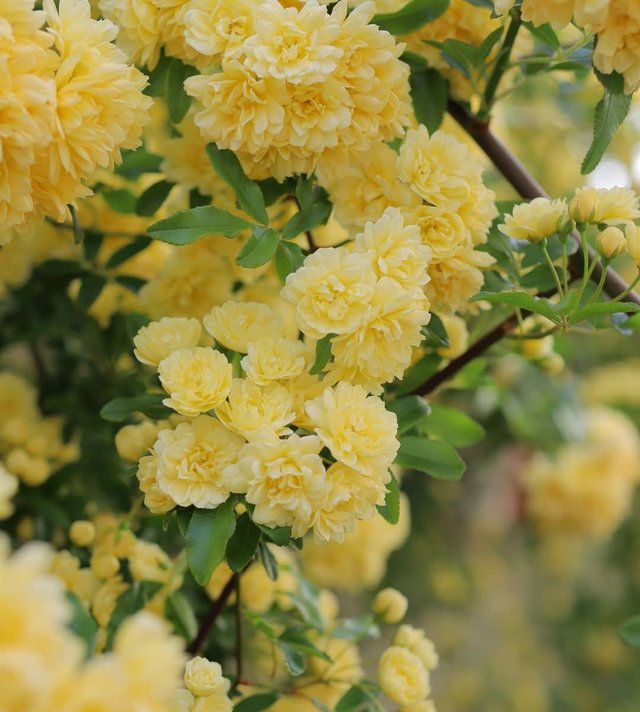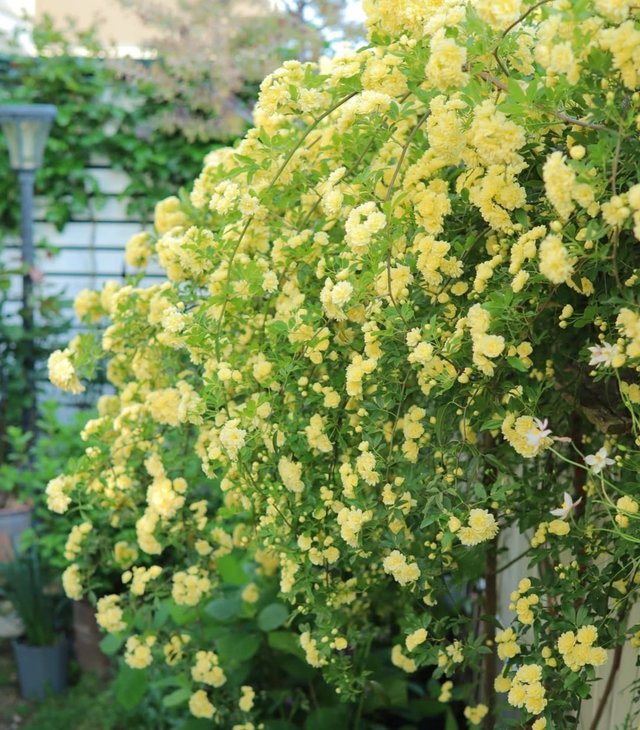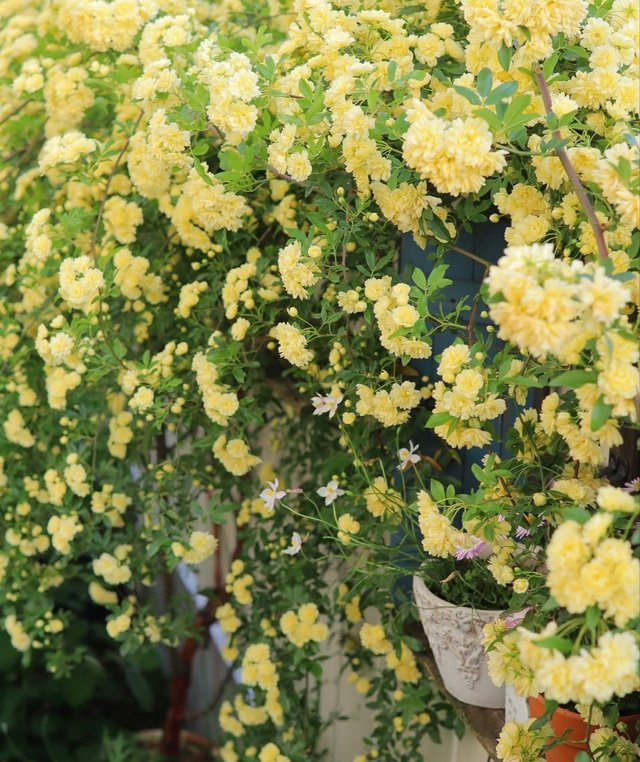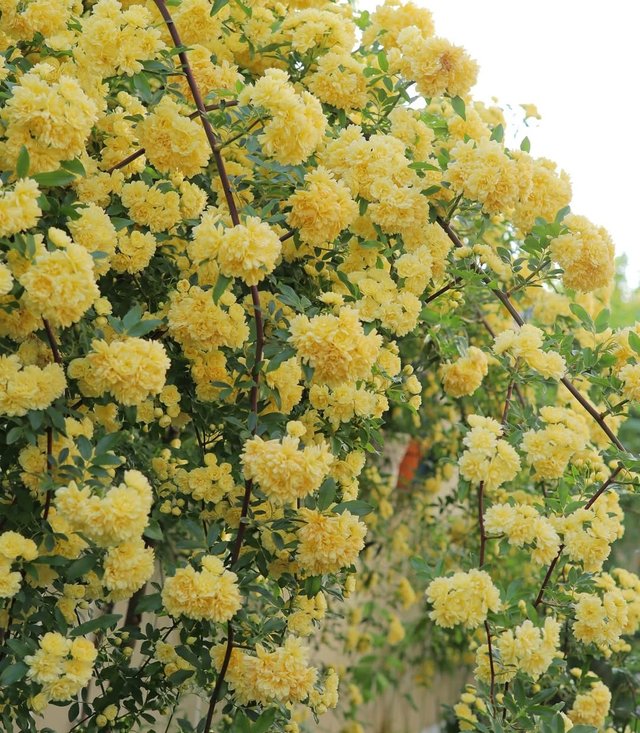Yellow Colour Lady Banks Rose Flower
Lady Banks’ rose is one of the most charming and graceful climbing roses, celebrated for its beauty, resilience, and historical significance in gardens around the world. Unlike many other roses that are admired for their large blooms or strong fragrance, Lady Banks’ rose captivates with an abundance of small, delicate flowers that cascade down in clusters, transforming trellises, arbors, and walls into clouds of color during its blooming season. This species has been cherished for centuries, particularly in Asia and Europe, and continues to be a favorite among gardeners who appreciate low-maintenance plants with remarkable ornamental appeal.
Origin and History
Lady Banks’ rose is native to central and western China, where it has grown wild for centuries. It was introduced to Europe in the early 19th century and named after Lady Dorothea Banks, the wife of the famous English botanist Sir Joseph Banks. Since then, it has become an admired feature in gardens across Europe, the Americas, and beyond. In the United States, one of the most famous specimens can be found in Tombstone, Arizona, where the “World’s Largest Rosebush” of Lady Banks’ rose spans over 8,000 square feet, planted back in 1885.
Appearance and Characteristics
This climbing rose is renowned for its vigorous growth and profuse flowering. Unlike many modern hybrid roses, Lady Banks’ rose produces very small, thornless stems—making it much more manageable and safe to handle. Its glossy green leaves provide a perfect backdrop for its floral display.
Flowers: The blossoms are small, about an inch across, and appear in large clusters. Depending on the variety, the flowers may be single or double, with shades ranging from creamy white to soft yellow. The yellow form and the white double form are particularly well-loved.
Fragrance: While not all varieties are fragrant, the white double-flowered type is known for a light violet-like scent that adds a subtle charm to its beauty.
Growth Habit: Lady Banks’ rose is a true climber and can easily reach 15 to 20 feet, and sometimes even more, when given proper support. It grows rapidly and can cover pergolas, walls, or fences within a few seasons.
Blooming Season
One of the defining characteristics of Lady Banks’ rose is its blooming cycle. Unlike repeat-blooming roses, it typically flowers only once a year, in spring. However, when it does, the display is breathtaking—a shower of hundreds, sometimes thousands, of blooms bursting forth simultaneously. The sheer abundance of flowers often creates the effect of a living waterfall of roses.




%20(9).jpeg)